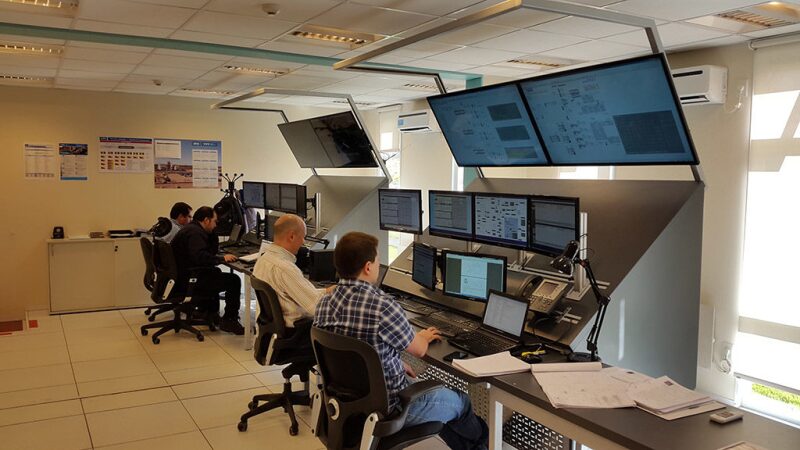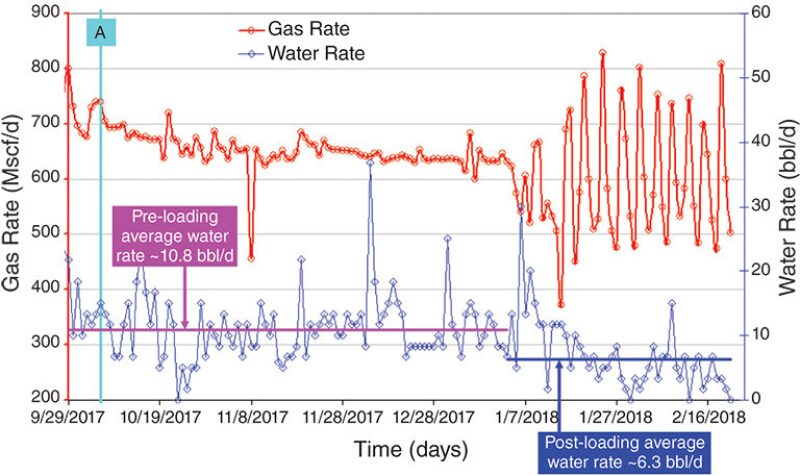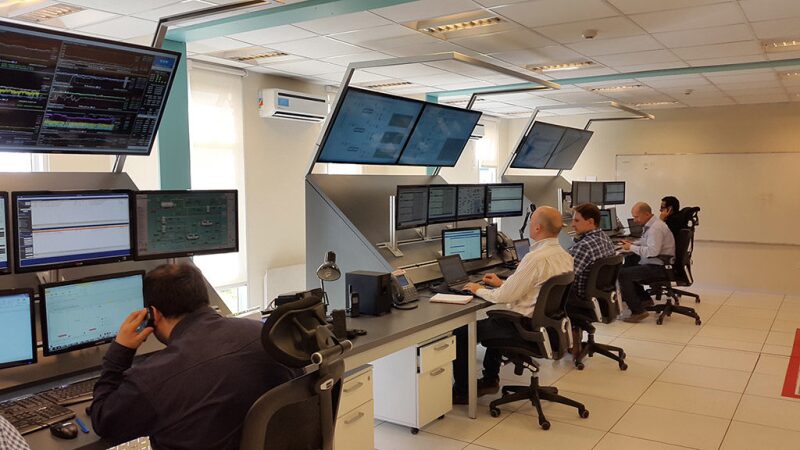
Shale plays present a daunting challenge for the small number of production experts charged with maximizing the output from this large population of fast-declining, quirky, troublesome, ever-longer, horizontal wells that are death to standard operating procedures.
On the face of it the industry has the problem in hand. Artificial lift systems are being installed early in the life of wells with strong initial production rates, followed by rapid declines that are supposed to flatten out to manageable levels when they reach 5 years old or so.
But there are no industrywide statistics to confirm if wells drilled recently are actually growing old at the single-digit rates that are widely assumed. Recently, though, Wood Mackenzie surveyed the decline rates of wells producing for more than 5 years in the Permian Basin and concluded the rate is around 14% a year.
As the population of old wells rises, interest in eking out more oil and gas from them appears to be up. The organizers of the recent SPE Artificial Lift Conference and Exhibition-Americas, expected to draw 500 people and wound up registering more than 700 to the Houston area event.
Much of the attention was on maximizing production from horizontal wells in ultratight rock by using better control systems and designs rather than focusing on improvements in the hardware. A key piece of those puzzles is developing ways of dealing with many wells where the performance varies erratically; monitoring, controls, and communication are often rudimentary; budgets are tight; and the physics of flow is still being figured out.
“The industry is finding out a lot of the older ways of working and older technical developments will not work for the horizontal wells at the scale we now have them,” said Anand Nagoo, president of Nagoo & Associates. He made the comment during a talk where he presented case studies of how his analytical multiphase flow model was applied in the wells of clients in unconventional development, including Equinor (SPE 190921, SPE 191772).
His critique was echoed in the description for an upcoming SPE Forum on Production in Horizontal Unconventionals: “While much investment has gone toward improving drilling and completions techniques, the industry still largely uses vertical well production techniques.”
Or as Steve Kennedy, production advisor at EOG Resources and the co-chair of the forum, said at a lunch where he was plugging the forum: “We need to get together and talk about it because these wells are” thoroughly disagreeable to deal with. Actually he put it more emphatically.
Two Engineers vs. 300+ Wells
There is money to be made in those troublesome old assets. With far more than 100,000 horizontal wells in the US, even small improvements can add up to some real money. Greg Leveille, ConocoPhillips chief technical officer, compared the process to the many small improvements that allowed drillers to slash the time needed to drill shale wells.
“With artificial lift it is the same type of story, those little gains in each element of artificial lift can have a big impact on tens of thousands of wells,” he said. “If you could come up with a $10,000-idea and use it on 10,000 wells, that is a really big number.”
Small gains can pay off if the cost is even smaller, strictly limiting the number of engineering hours per well.
YPF is showing what is possible in the Vaca Muerta, where a pair of engineers in its Decision Support Center are monitoring more than 560 wells drilled since development began on the Loma Campana area back in 2014.
Their job is to maximize the output of the wells with artificial lift, which is 80% of the total and rapidly rising. A paper from YPF talked about how it uses automation and analytics to maximize production from more than 300 wells on plunger lift that require “constant supervision and need constant optimization,” said Juan Ignacio Alvarez Claramunt, the Decision Support Center team leader who presented the paper (SPE 190930).
The wells are wired to allow remote monitoring and control. The two optimization engineers can fix many problems from the control room by adjusting the well’s control sytem. Some issues, though, require reaching out to others to diagnose the cause, or get work done in the field. To facilitate collaboration in those cases, YPF’s monitoring center is located near the big open room that is home to the production team. There is a conference table and monitors in the middle of the production team’s cubicles for face-to-face meetings. Video conferences are used to connect with widely scattered experts.
Last year a multidisciplinary analytics team at YPF created an automated system that singled out the wells likely to require attention. That narrowed their focus to about 40% of the wells and gave the support team a description of each problem, the paper said.
YPF reported adding 3,500 B/D of production by operating systems more efficiently and reducing downtime. Alverez Claramunt said it showed that managing “300 wells with two engineers is possible.”
Machine Control
In the time between when the YPF paper was written and delivered, 20 plunger lift wells were added to the total and a handful of rigs are drilling more. Plus, the job is getting more complicated as YPF adds more performance variables to monitor and control in its drive to produce 90% of the estimated production potential from each well, the paper said.
Now the digital team in the Argentine national oil company is working on a method to automatically adjust the setpoints on plunger lift wells based on artificial intelligence, said Eugenio Ferrigno, operations technology manager for YPF.
In the Bakken, computers that can directly adjust the setpoints on rod pumps are now in control of some lift systems. Equinor recently deployed a system developed by Ambyint, which had been advising engineers, to begin actually adjusting the settings on 50 rod pumps there. The successful pilot project was described in this JPT story and a paper presented by Equinor (SPE 190955).
Automation advocates say machines are better equipped to do a job that requires rapidly repeating tedious calculations to ensure the pumping rate is in sync with the changing fluid flow into the well. When a computer starts doing that, engineers will need to find other ways to contribute to the bottom line.
The presentation delivered by Brian Arnst, director of optmization for Ambyint, noted that it took some time to convince Equinor employees to let the machines make changes without human review. “Equinor got more comfortable with the results and opted for auto control,” Arnst said, adding that on projects like this “change management is involved.”

Thinking Horizontally
After hearing Nagoo’s presentation Clint Mason stopped by the booth of Nagoo’s consulting firm to see if the analytical flow model he had heard about might be used to help create a “real-time intuitive control platform that can predict and react” to problems that could affect production.
The general manger for the Canadian and US division of Definitive Optimization was looking for a way to improve the performance of the artificial lift systems it sells “so we’re selling more than just the steel.”
Based on the horizontal well data used to develop the analytical model, Nagoo said relatively small changes in artificial lift designs, based on the specific well analysis, can have a significant production impact.
Mason wants customers to think about lift systems up front because they will need it soon enough—often 6–12 months after initial production. Also the cost of installing the hardware at the time the well is completed is lower than it will be later when retrofitting will require an intervention plus lost production.
Also, there is more money to spend early on. Mason points out that while operators spend millions of dollars to drill and complete wells, the budget gets a lot tighter after the well goes into production.
ConocoPhillips has about 4,000 wells on rod pumps producing 100,000 B/D that are controlled by systems dating back to the 1980s, Leveille said. It is awfully hard to justify the cost of state-of-the-art control systems based on the likely production gains from wells averaging 25 B/D. “We cannot replace all 4,000 of those controllers with something from the 21st century,” Leveille said.
Nagoo divides his consulting customers into two groups: those looking for a simple solution, such as the best pump to install; and those “actively identifying what they do not know” and looking for a better understanding of what can be done for improvement.
When it comes to horizontal wells, there is a lot to learn, because they behave quite differently from vertical wells, Nagoo said. An obvious difference is the sharp change in the inclination of the wellbore as it curves from vertical to horizontal. Fluid accumulations at the base of that turn play a large role in how fluid buildup in the well affects future production.
Equally important, and all but invisible, are the many ways the well in the ground will differ from the smooth curves and straight paths of the ideal horizontal well.
Some follow S-shaped paths to maximize the length of the lateral inside the lease lines. Others take sharp, dogleg turns that limit how deep a pump can be placed without damage. Along the lateral they often undulate up and down, creating dips for fluids to accumulate in the horizontal pipes that serve as separators.
The problems range from liquid holdup, when some of the fluid being pushed up the well by gas begins to fall back, and accumulations of “liquid that just sits there,” Nagoo said. The challenge for those doing artificial lift is to find ways to extend the life of the well by minimizing the amount of gas flow needed to sustain liquids production.
Plunger lift systems can maximize the fluid lifted. Proper placement of the production tubing near the base of the curve can maximize the lifting power of the gas.
The production tubing design must balance the capacity needed for high early production volumes with the constriction required later on to extend production. “Small changes in diameter will lead to big changes” in how liquids-loading behavior affects the ability to transport liquids, he said.
A transition to narrower production tubing allows gas to transport the liquid more efficiently than it could in a wider tube. A narrower diameter increases the efficiency of the gas push because “gas has a hard time carrying liquids with it in a fat pipe,” Nagoo said.
In wells where liquid loading begins in the bend, installing artificial lift equipment higher up in the well, such as gas lifts, “will not address the well’s liquid-loading problem regardless of the gas injection rate,” Nagoo said.

Mass Produced and Customized
Mass production is commonly associated with assembly lines making the same product again and again. Automated modern assembly lines, though, are designed to give customers many options, and high-volume-well optimization needs to be as flexible.
Even nearby wells drawing from the same strata vary in ways that alter the lift system requirements. Nagoo said there are three critical variables that affect lift systems:
Infrastructure—how the well is drilled, completed, and managed
Multiphase fluids—the gas and fluids flowing through the well
Boundary conditions—operating conditions that alter the pressure and flow from the bottom of the well to when it goes out from the wellhead
If all three are the same in two wells, they are analogous and “then you can close your eyes” and manage them as if they are the same, Nagoo said. But he warned against making that assumption.
For example, boundary conditions can vary significantly among nearby wells. Downhole presssure guages and temperature monitors are needed to verify conditions that alter how lift systems are designed and managed.
What is really going on in the well is often a matter of guesswork because the only sources of data in many wells are surface pressure and flow measures. Pressure and production at the top and the bottom of the well are certainly different, and the cause of conditions, such as erratic stop-and-start flows, are tricky to diagnose.
Challenges presented by horizontal wells are inspiring some twists on some old ideas. Mason co-chaired a technical section featuring an idea he favors, using varying combinations of gas lift and plunger lift over the life of the well. Using both systems can deliver results easily while exceeding what either system could do on it own.
The paper by XTO Energy (SPE 190937) said that by using the two lift methods in the Barnett Shale, it was able to improve production while reducing the gas injected. It said the “limited injection gas was repurposed to benefit multiple wells on locations that previously would not have benefitted.”


